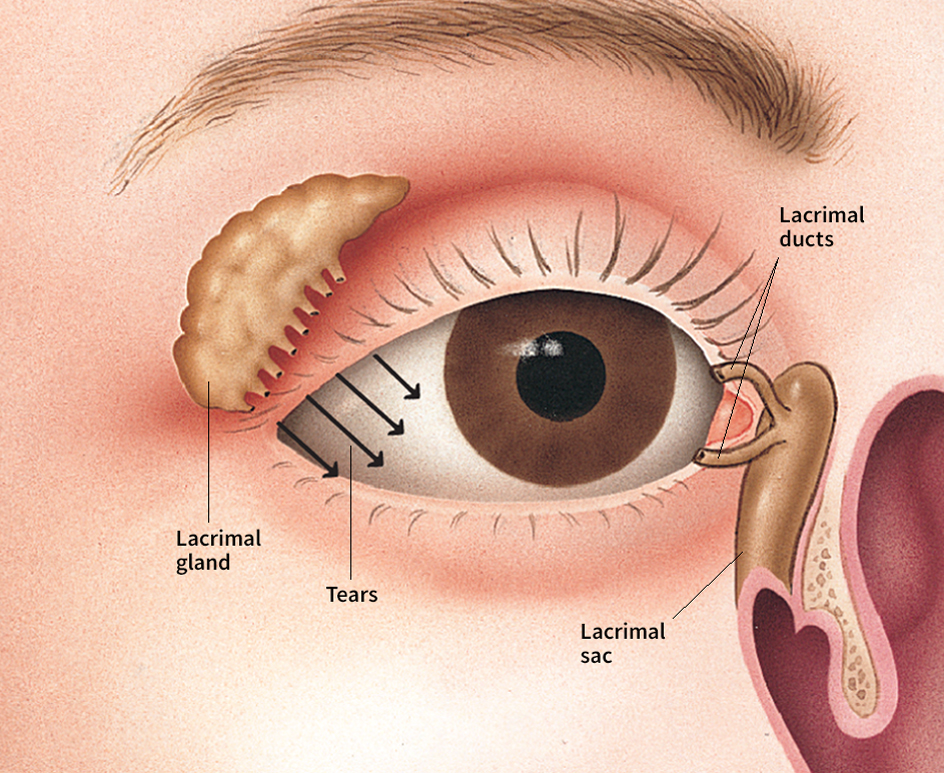Tears are liquid secretions that moisten and cleanse the eye. Tears continually bathe the cornea, the tough outer layer of the eyeball. They help to clear it of foreign particles, such as dust and hairs. Tears also keep the eye from drying out, which would result in blindness. Tears are mostly a solution of water and salt. They also contain proteins that fight bacteria and other infectious agents.

Tears come from the two lacrimal glands. One lacrimal gland lies over each eye, behind the upper eyelid. Each releases fluid through several small ducts in the underside of the lid. Each time the eye blinks, the eyelid pulls a little fluid from the glands.
When a person feels a strong emotion, such as grief or anger, the muscles around the lacrimal glands may tighten up. This squeezes out the tear fluid. The same thing happens if a person laughs heartily.
After tears pass across the eyeball, they flow out through two lacrimal ducts that open at the inner corner of each eye. The lacrimal ducts lead to a lacrimal sac, then to the nasolacrimal duct, which drains into the nasal cavity. This is why the nose runs when a person cries.
See also Eye .
